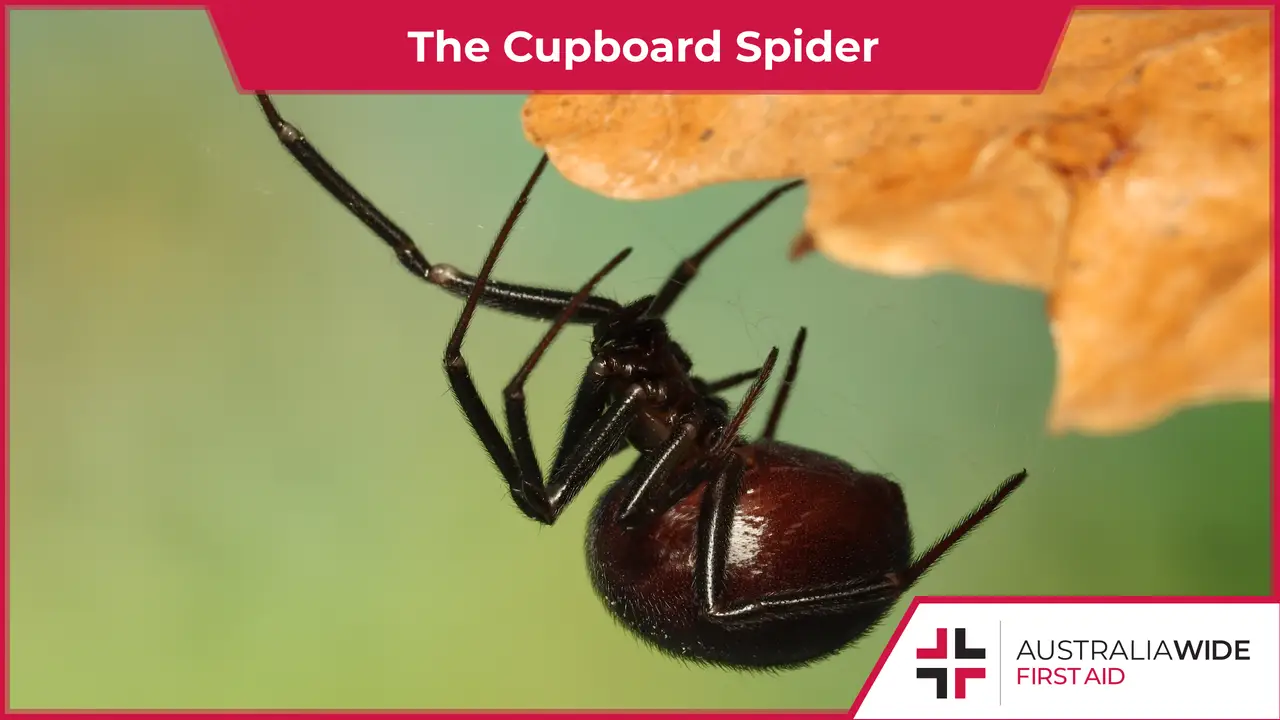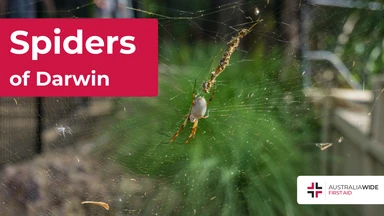How Dangerous is the Cupboard Spider?


In this article, we look at the Cupboard spider (Steatoda sp.), which closely resembles the deadly Redback and is a common guest in Australian houses.
We also cover spiders and their bites in our general and childcare first aid courses.
We have training locations in every state, capital city, and major town throughout Australia. Head to our website to find and enrol in a training location near you today.
Like most members of the family Theridiidae (comb-footed spiders), the Cupboard spider has the following identifying characteristics:
Unlike Redback spiders, Cupboard spiders do not have a red hourglass marking on their underside.
Cupboard spiders have been known to build their tangled looking webs under rocks, timber, and bark in temperate and tropical climates throughout the world.
Some male specimens can also be found walking among leaf litter as ant mimics, spiders that imitate other insects to prey upon them without being detected.
There are two cosmopolitan species of Cupboard spiders that are commonly found in dark, sheltered, and undisturbed places around the house or garden - Steatoda capensis and Steatoda grossa.
Also known as Brown house spiders, these two species prefer to build their webs:
Unlike their look-a-like, the Redback spider, Cupboard spiders are not considered especially dangerous.
They bite infrequently, and their bites may only result in headache, nausea, and small blisters around the affected area.
If you are responding to a bite from a Cupboard spider, reassure the casualty and apply a cold compress to the affected area.
Then, monitor for signs of deterioration or anaphylaxis, and call Triple Zero (000) for an ambulance accordingly.
Commonly found around the house or garden, the Cupboard spider (the Brown house spider) is relatively harmless, and their bites can most often be treated with a cold compress.
For more tips on treating bites from some of Australia's deadliest spiders, book a general or childcare first aid course with us. Head to our website to find and enrol in a training location near you today.

March 11, 2025
Darwin, the tropical capital of Australia’s Northern Territory, is home to a rich diversity of wildlife - including an impressive array of spiders. From the sprawling webs of golden orb-weavers to the cryptic camouflage of trapdoor spiders, these arachnids play a vital role in the local ecosystem. While some may inspire fear, the majority are harmless and even beneficial, helping to control insect populations.

September 4, 2024
Cat bites, while often underestimated, can lead to serious health complications if not treated promptly and properly. Cats' mouths harbour a variety of bacteria that can cause infections in humans.

April 1, 2024
Encounters with wildlife can often be thrilling, but when it comes to the creature known as the drop bear, the experience can quickly turn dangerous. A sharp increase in recent attacks prompts the need for understanding proper first aid procedures in case of an attack.